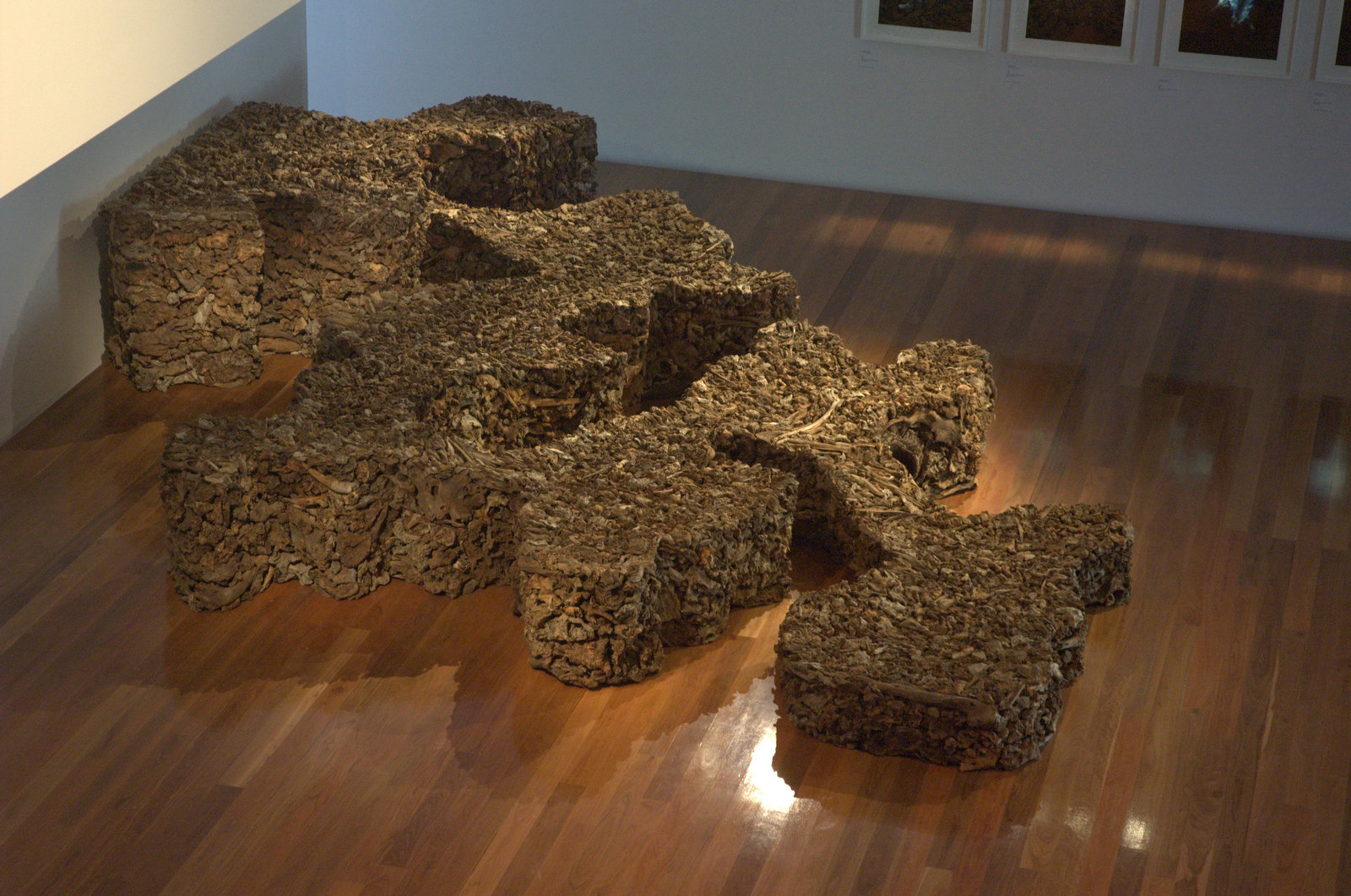Everyone Lives Downstream 2, 2007
Wonderful World
Anne & Gordon Samstag Museum of Art, Adelaide, Australia
James Darling & Lesley Forwood, Everyone Lives downstream 2, 2007, Mallee roots, at Wonderful World, Anne & Gordon Samstag Museum of Art
It was soon after beginning a journey through the jungle of Sarawak in June 2004 that I saw a large sign on the entrance to a water treatment plant: everyone lives downstream.
A simple and pertinent statement for the people of Sarawak, for the island of Borneo, for the island of Australia, for the people of the world.
What is being passed on to us and what we pass on to others.
James Darling, Nov 2004
James Darling and his partner Lesley Forwood are farmers and conservationists who express their affinity with the Australian landscape in the form of their works as well as through the materials they use. They build installation art from tonnes of roots of the mallee gum tree which were torn from the earth in a previous age when clearing the land was seen as the way to tame the country. So well adapted to arid land, the richly textured and tortured roots speak eloquently of tenacious survival in the Australian landscape.
Mallee root installations were first exhibited in “Define the Country”, at the Riddoch Art Gallery, Mt Gambier in 1994. Since then the artists have built sculptures in many Australian venues as well as exhibiting in Finland, Madrid, Paris, and Singapore.
Everyone Lives Downstream 2 describes the movement of water through the Australian landscape. Australia’s untamed rivers are an extraordinary valuable resource. They are so much more than just carriers of water. They include the wider floodplains and watercourses that spread high flows and replenish vital groundwater that sustain vegetation during dry times.
Everyone Lives Downstream 2 enacts the fundamental connectedness of the elements that make up a river. Water flows from the headwaters to the floodplains and on to the wetlands or estuaries where the river finishes its journey. At times just a chain of ponds or a dry creek bed fringed by redgums, at times a watercourse as wide as the horizon, our rivers ebb and flow like life itself. The droughts and floods of Australia drive these wonderfully adapted systems. The pools of a drying river are special refuges that must be protected if our rivers are to spring back to life. They provide the essential resilience and diversity that characterises the boom and bust cycle of our arid land. Not only does water move from pool to pool when it is flowing, but so do the plants and animals that live in our waterways.
Everyone Lives Downstream 2 asserts the cycle of nature, positions us in hydrological time and asks how we consider our obligations to those who live downstream. This fundamental question is central to developing a common ethic that might help the world cope with increasing water scarcity.
Water is basic to life and we depend on it. But beyond the practical, it contributes to and shapes the human spirit. This work of Darling and Forwood helps us see the movement of water through our landscape, it makes a physical statement about connections between communities and gives insight into the collective aspirations of human spirit.
Peter Cullen, Wonderful World Catalogue
for Anne & Gordon Samstag Museum of Art, 2007
Professor Peter Cullen has worked in the field of natural resource management for over 35 years. Professor Cullen was appointed an Officer of the Order of Australia in 2004 for service to freshwater ecology. He is known internationally as the leader of the Wentworth Group of Concerned Scientists, which is responsible for developing the Blueprint for a Living Continent.
This text is reproduced courtesy of the Samstag Museum of Art. It first appeared in the catalogue Wonderful World, published to accompany the exhibition of the same title, curated by Erica Green, 12 October – 7 December 2007, Samstag Museum of Art, University of South Australia.






